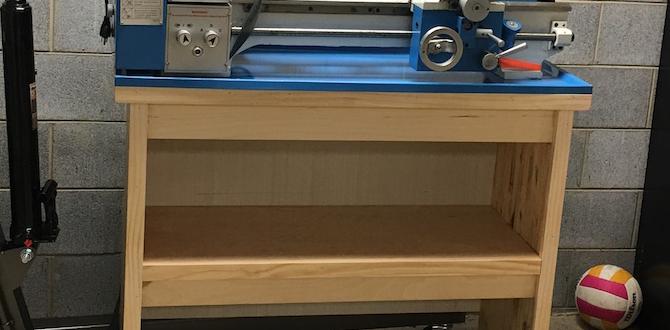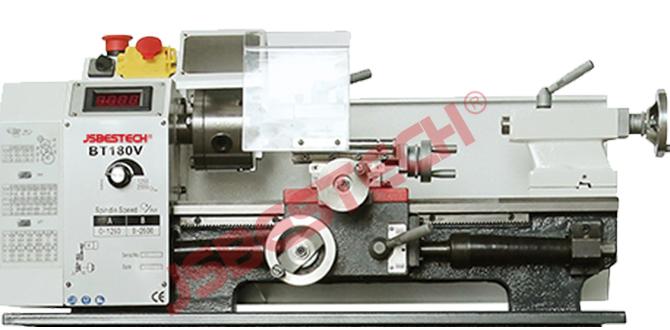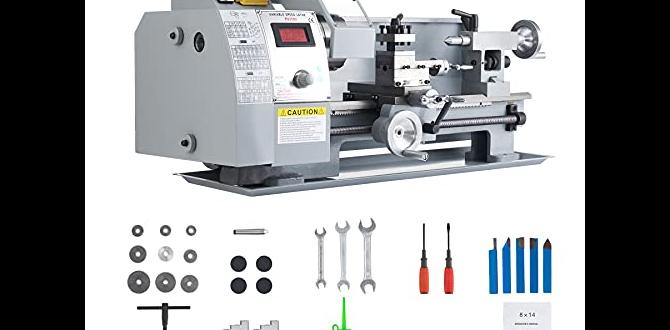Carbide end mills can achieve excellent tool life in 6061 aluminum by using the right speeds, feeds, and cutting strategies. This guide shows beginners how to maximize your end mill’s lifespan, saving you money and frustration.
Cutting 6061 aluminum with a carbide end mill is a common task for many home machinists. But if your end mills seem to wear out fast, you’re not alone. It can be frustrating when your tools don’t last as long as you expect, leading to more expenses and less time creating. This article is here to help! We’ll break down exactly what you need to know to get the most out of your carbide end mills when working with 6061 aluminum. We’ll cover everything from choosing the right cutter to setting up your machine for success. Get ready to see your tool life improve dramatically!
Understanding 6061 Aluminum and Carbide End Mills
6061 aluminum is a popular choice for DIY projects and professional work alike. It’s lightweight, strong, and relatively easy to machine. However, it can also be gummy, meaning it tends to stick to cutting tools. This “stickiness” is a primary reason why end mills can fail prematurely if not used correctly.
Carbide end mills are great for aluminum because they are harder and can withstand higher cutting temperatures than high-speed steel (HSS) tools. This hardness allows them to cut faster and maintain their sharpness for longer. But even carbide has limits, and using it improperly with gummy materials like 6061 can lead to built-up edge (BUE), where aluminum fuses to the cutting edge, quickly dulling the tool.
Why Tool Life Matters
Maximizing tool life isn’t just about saving money on replacement end mills, although that’s a big part of it! Longer tool life also means:
- Consistent Results: A sharp, unworn end mill produces cleaner cuts and more accurate dimensions.
- Less Downtime: You spend less time swapping out tools, which means more time actually machining.
- Reduced Risk of Tool Breakage: A dull tool is more likely to snag and break, which can damage your workpiece or even your machine.
- Better Surface Finish: Sharp tools leave a smoother finish on your parts.
Key Factors for Carbine End Mill Tool Life in 6061 Aluminum
Several factors play a crucial role in how long your carbide end mill will last when cutting 6061 aluminum. Let’s dive into the most important ones.
1. Speeds and Feeds: The Golden Rule
This is arguably the most critical aspect. Getting your spindle speed (RPM) and feed rate (how fast the tool moves through the material) balanced is key. Too slow a speed or too fast a feed can lead to excessive heat and chip loading. Too fast a speed or too slow a feed can also cause problems, like rubbing and overheating.
Spindle Speed (RPM): For carbide end mills in 6061 aluminum, a good starting point is often between 3,000 and 10,000 RPM. The exact speed depends on the diameter of your end mill, the number of flutes, and your machine’s capabilities. Smaller end mills generally need higher RPMs.
Feed Rate: The feed rate dictates how much material each flute of the end mill removes per revolution. Too little material per tooth (chip load) can cause rubbing and heat. Too much can overload the tool. A common guideline for chip load in aluminum with carbide is between 0.001 to 0.005 inches per tooth, depending on the end mill diameter.
Calculating Feeds and Speeds: While there are formulas, for beginners, it’s often best to use online calculators or rely on manufacturer recommendations. A great resource for machining data is the CarbideProcess.com Feeds and Speeds Calculator. Always start with conservative settings and increase them gradually if everything sounds and feels right.
2. Chip Evacuation: Keep It Clear!
Aluminum, especially 6061, is notorious for creating long, stringy chips. If these chips can’t escape the cutting area, they can recut, causing heat and wear. Proper chip evacuation is vital.
- Flute Design: End mills with higher flute counts (e.g., 3 or 4 flutes) are generally better for harder materials, but for aluminum, 2-flute “chip breaker” or “high-helix” designs can be excellent. These have larger chip pockets and steeper helix angles to help clear chips more effectively.
- Coolant/Lubrication: Using a good quality cutting fluid or lubricant is essential. For aluminum, specific aluminum-cutting fluids or even isopropyl alcohol can help reduce friction and carry chips away. Compressed air is also very effective at clearing chips, especially in high-speed milling. For CNC machines, flood coolant systems are ideal. For manual machines, a spray bottle or a simple drip system can work wonders.
- Cutting Strategy: Don’t take overly deep cuts. Step down (Z-axis depth of cut) and step over (X/Y-axis width of cut) in smaller increments to allow chips to clear more easily.
3. End Mill Geometry and Coatings
Not all end mills are created equal, and the geometry and any coatings can make a significant difference.
- Number of Flutes: As mentioned, 2-flute end mills are often preferred for aluminum because they offer more chip clearance. 3 and 4-flute end mills can be used, but you might need to adjust your feeds and speeds and be more diligent with chip evacuation.
- Helix Angle: A higher helix angle (often 30-45 degrees) helps to shear the material more effectively and lifts chips out of the cut.
- Coatings: While not always necessary for aluminum, some coatings like ZrN (Zirconium Nitride) can improve lubricity and reduce friction, leading to better chip flow and extended tool life. Plain uncoated carbide is also very common and works well if other parameters are dialed in.
- End Mill Type: For general pocketing and profiling, standard end mills work well. For slotting (cutting a full-width groove), specialized slotting end mills or taking shallow passes are recommended to avoid severe chip recutting.
4. Rigidity and Machine Condition
A flexible setup is a fast track to tool breakage and poor surface finish.
- Machine Rigidity: A wobbly machine or worn spindle bearings can introduce chatter and vibration, which rapidly dulls and breaks end mills. Ensure your machine is stable and well-maintained.
- Workholding: Secure your workpiece firmly. A part that moves during the cut will lead to inconsistent depths and potential tool damage. Use appropriate vises, clamps, or fixtures.
- Tool Holder: Use a quality tool holder (like a collet chuck or hydro-tool holder). A worn or cheap tool holder can cause runout (wobble), leading to uneven cutting, increased wear, and potential tool breakage.
Choosing the Right End Mill for 6061 Aluminum
When selecting an end mill for 6061 aluminum, consider the cutting task. For most general-purpose machining like pocketing and profiling, a 2-flute, high-helix carbide end mill is an excellent choice.
Example Specification: You might be looking for a "carbide end mill 3/16 inch 1/4 shank standard length for aluminum 6061 long tool life." For this, a 3/16" diameter end mill with a 1/4" shank, typically 2 flutes, and a high helix angle would be a good fit for aluminum. Standard length is generally fine; however, if you are milling deep pockets, an extended length might be needed, but this also increases the risk of chatter and deflection.
Material: Ensure it’s solid carbide. For aluminum, uncoated carbide or those with a light, friction-reducing coating like ZrN are preferred. Avoid aggressive coatings like TiAlN or TiCN, as they can sometimes cause aluminum to stick more readily.
Step-by-Step Guide to Maximizing Tool Life
Let’s put this all together into actionable steps. These steps assume you have a basic understanding of your milling machine (manual or CNC) and appropriate safety gear.
Step 1: Select Your End Mill
Choose a 2-flute solid carbide end mill designed for aluminum. A 3/16" diameter with a 1/4" shank is a common size for hobbyist work.
- Application: General profiling, pocketing.
- Material: Solid Carbide.
- Flutes: 2.
- Helix Angle: High helix (30-45 degrees) is ideal.
- Coating: Uncoated or ZrN.
Step 2: Set Up Your Machine
- Spindle Maintenance: Ensure your spindle runs smoothly without excessive noise or vibration.
- Tool Holder: Use a clean, high-quality collet chuck or tool holder. Clean the shank of the end mill and the inside of the collet before inserting.
- Workholding: Clamp your 6061 aluminum workpiece securely. Make sure it’s indicated in square if necessary for precise alignment.
- Coolant/Lubrication: Prepare your chosen coolant or lubricant (e.g., a dedicated aluminum cutting fluid, isopropyl alcohol, or even a light oil). Have a method ready to apply it – spray bottle, air blast, or flood system.
Step 3: Determine Speeds and Feeds
This is where practice and good starting points come in.
- Spindle Speed (RPM): For a 3/16" carbide end mill, start around 6,000-8,000 RPM. If you have a very rigid machine and good coolant, you might push it higher.
- Chip Load: Aim for a chip load of 0.0015" – 0.003" per tooth. For a 3/16" end mill, this translates to a feed rate of approximately 18-48 inches per minute (IPM) if you have 2 flutes (0.0015" 2 flutes 6000 RPM = 18 IPM, and 0.003" 2 flutes 8000 RPM = 48 IPM). Again, use an online calculator for more precise figures.
- Depth of Cut (DOC): For finishing passes, a DOC of 0.010" – 0.030" is good. For roughing, you can go deeper, but watch for chatter. A common guideline is to set DOC to 1-2 times the end mill diameter (e.g., 0.187" to 0.375" for a 3/16" tool, but this is aggressive). For better tool life, especially for beginners, try a DOC closer to 50% of the tool diameter, or even shallower on initial passes.
- Step Over: For pocketing, an optimal step-over is usually between 20-40% of the tool diameter (0.037" – 0.075" for a 3/16" tool). For profiling the outside of a part, a step-over of 50-75% is common.
Step 4: Make the Cut
- Apply Coolant/Lubricant: Start your coolant flow or spray before the tool engages the material.
- Engage: Feed the end mill into the material at the programmed feed rate. Listen to the sound. A crisp, clean sound is good. A high-pitched squeal or a rumbling/chattering sound indicates a problem (likely with speeds, feeds, or rigidity).
- Observe Chip Formation: Watch the chips being produced. They should be relatively small, distinct pieces, not long, stringy ribbons. If they are stringy and packing up, reduce your feed rate or increase your spindle speed slightly, and ensure coolant is effectively reaching the cutting zone.
- Plunge Moves: Avoid plunging directly into aluminum with a standard end mill if at all possible. If plunging is necessary, use a slow feed rate and a specialized plunge or compression end mill if available. Pushing a standard end mill straight down aggressively is a common way to break it.
Step 5: Monitor and Adjust
- Listen to the Machine: Changes in sound often indicate issues.
- Inspect the Chips: As mentioned, good chips are key.
- Check the Tool (When Safe): Periodically, and especially if you suspect an issue, stop the machine and carefully inspect the end mill’s cutting edges. Look for any signs of aluminum buildup, chipping, or excessive wear.
- Readjust as Needed: If you hear chatter, try slowing your feed rate or reducing your depth of cut. If you notice excessive heat or dulling, try increasing your RPM slightly or ensuring ample coolant.
Common Problems and Solutions
Here’s a quick rundown of issues you might face and how to troubleshoot them.
| Problem | Possible Causes | Solutions |
|---|---|---|
| Excessive Heat / Melting |
|
|
| Chatter / Vibration |
|
|
| Built-Up Edge (BUE) / Aluminum Sticking |
|
|
| Tool Breakage |
|
|
For more in-depth analysis regarding optimal machining parameters, you can refer to resources like the Sandvik Coromant technical datasheets, which provide extensive data on cutting parameters for various materials and tools. While they are geared towards professionals, the principles and data can be very informative for hobbyists aiming for optimal performance.
Advanced Tips for Extending Tool Life
Once you’ve mastered the basics, here are a few extra tips to squeeze even more life out of your carbide end mills:
- Cutter Compensation: Even with precision, tools wear. If you’re doing high-tolerance work, learn to use cutter radius compensation (G41/G43 on CNC) so you can easily swap in a new tool and tell the machine to adjust its path.
- Inspection Schedule: For critical or repetitive jobs, establish a schedule for inspecting and potentially replacing your end mills before they reach a point of failure.
- Edge Prep/Chamfer: Some machinists lightly “edge break” or put a tiny chamfer on the corners of their end mills, especially for aluminum. This can help prevent chipping on the edges. This is a more advanced technique and usually requires a tool grinder.
- Re-sharpening: For very high-volume users, professional re-shar




